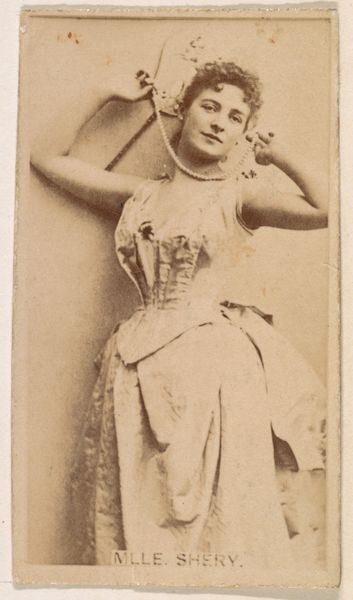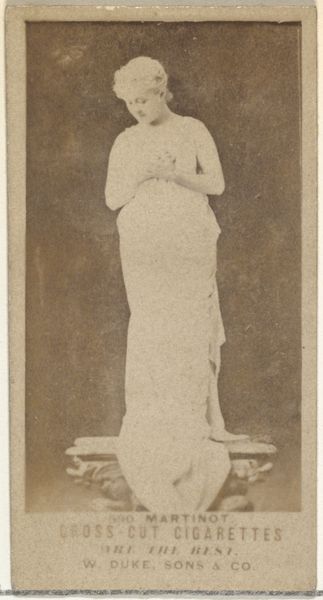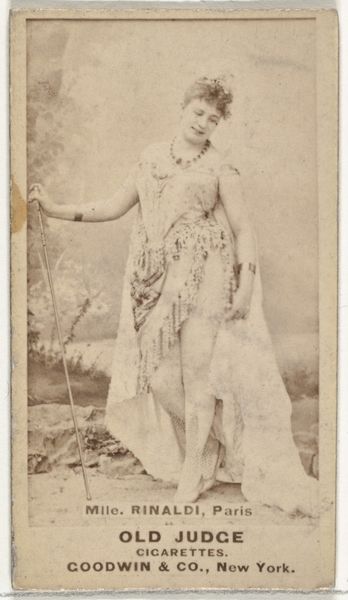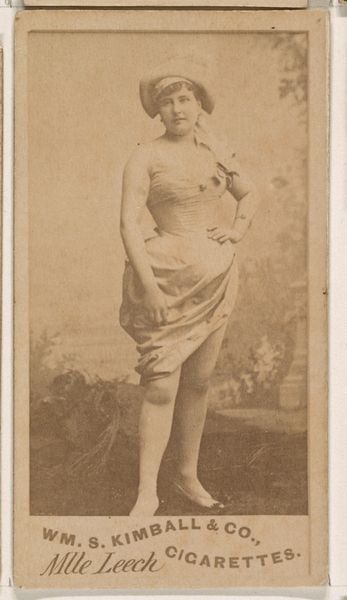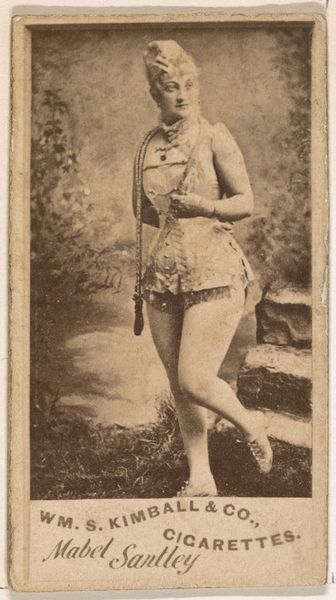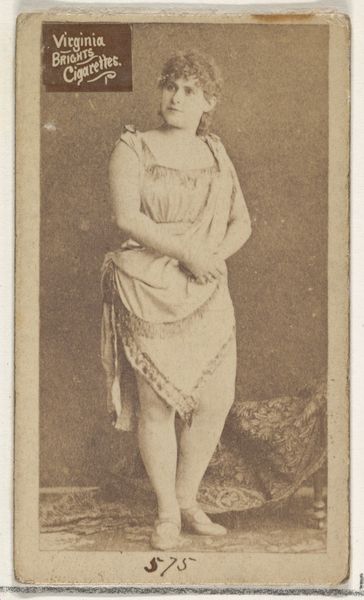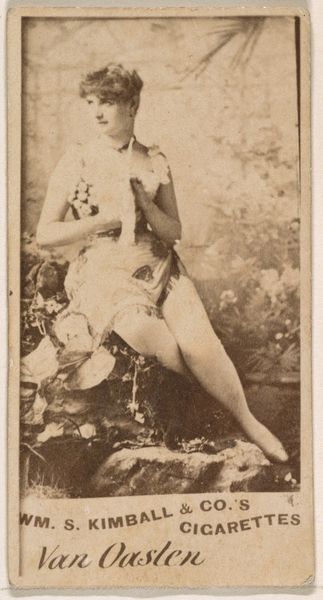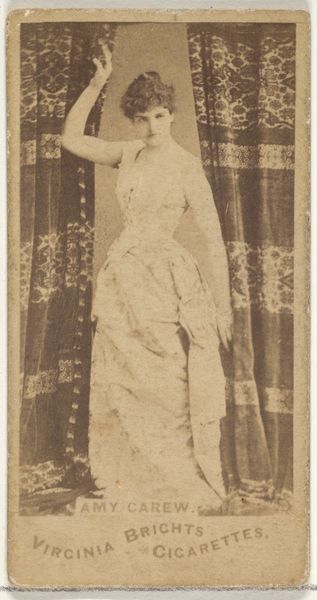
Card Number 351, Carrie Rumbold, from the Actors and Actresses series (N145-3) issued by Duke Sons & Co. to promote Cross Cut Cigarettes 1880s
0:00
0:00
drawing, print, photography
#
portrait
#
drawing
# print
#
charcoal drawing
#
figuration
#
photography
Dimensions: Sheet: 2 11/16 × 1 3/8 in. (6.8 × 3.5 cm)
Copyright: Public Domain
Editor: So this is Card Number 351 featuring Carrie Rumbold from the Actors and Actresses series, dating back to the 1880s. It was created by W. Duke, Sons & Co. as an advertisement. It’s interesting how this image of a performer, possibly photographed then reproduced as a print, was used to sell cigarettes. What do you see in it? Curator: I see a reflection of late 19th-century capitalism deeply intertwined with the commodification of the female image. Rumbold, presumably an actress, is being used here not for her talent but for her likeness to sell a product, Cross Cut Cigarettes. What does it mean when a woman's image is primarily valued for its ability to generate profit? The pose, the styling, it’s all carefully constructed to appeal to a male gaze. Editor: That makes sense. So, it's not just a simple portrait; it’s tied to gender and commerce. Curator: Exactly. Think about the historical context. This was a period of immense social change, with nascent feminist movements beginning to challenge existing power structures. Yet, here we see a reinforcement of those structures, a woman’s worth defined by her marketability. And who gets to define what's marketable? It isn't Carrie Rumbold herself. Editor: It's a bit unsettling to think about it that way, because, initially, it just looks like a regular, pretty image of a performer. Curator: It *is* a pretty image, deliberately so! And that's precisely what makes it so potent. The image’s appeal is not accidental. It speaks to the construction of ideals, the very definition of beauty and femininity used to control and direct cultural consumption. Who benefited from this, and at what cost? Editor: It’s given me a lot to consider in terms of the relationship between art, advertising, and the portrayal of women in the 19th century. Thanks! Curator: It’s essential to examine these seemingly simple images through a critical lens. The power of art, even in this commercial form, resides in its ability to reflect and, often, reinforce the social norms of its time. Recognizing that helps us understand the complex legacy of the past.
Comments
No comments
Be the first to comment and join the conversation on the ultimate creative platform.





